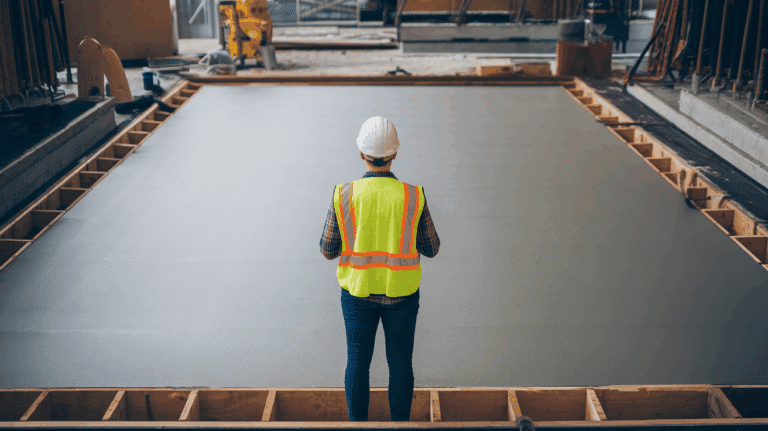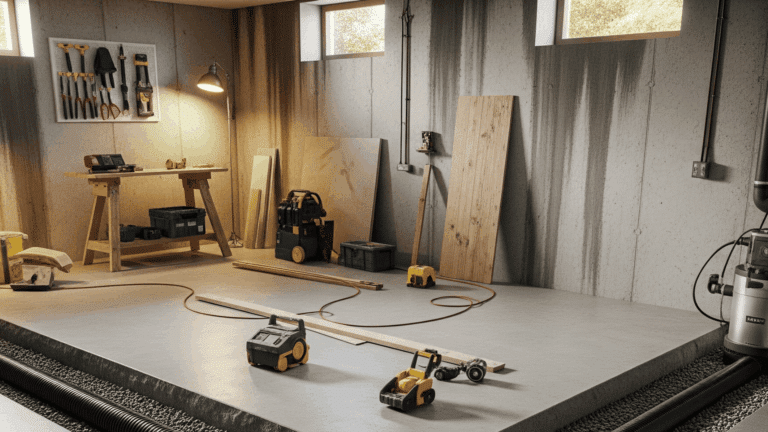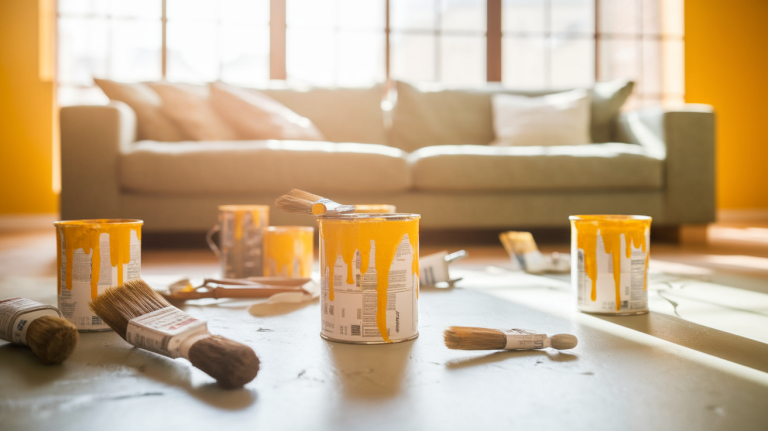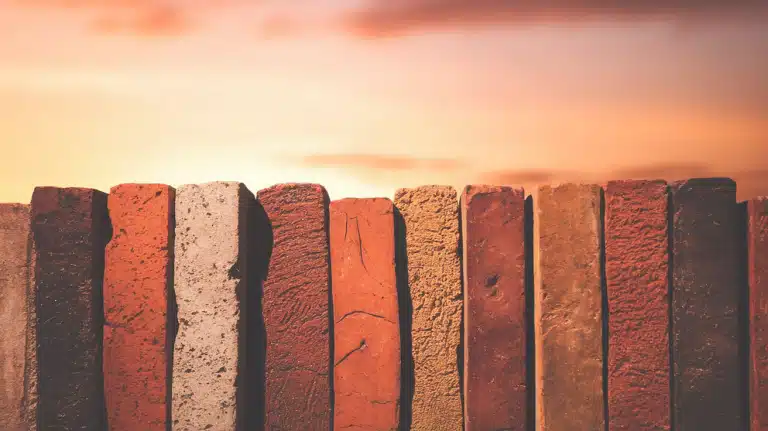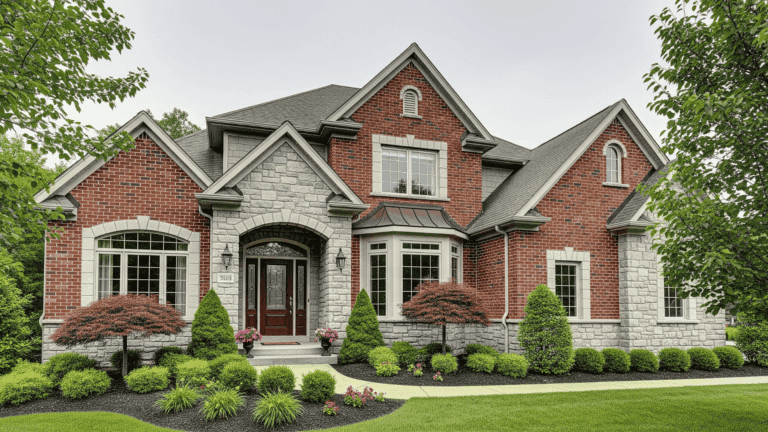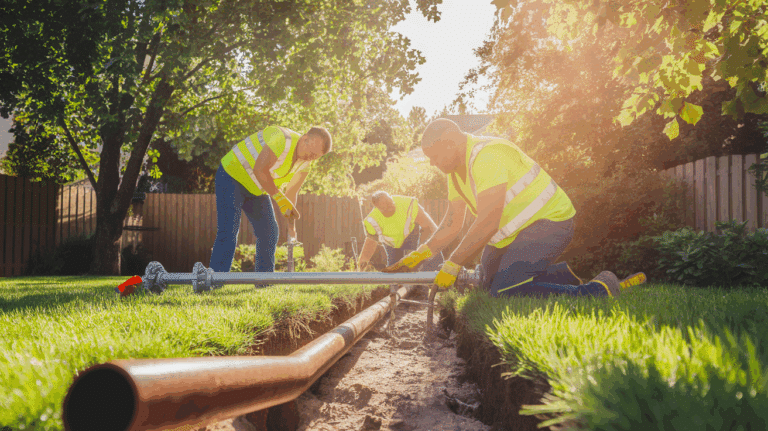What are Bricks Made of: Types and Usage
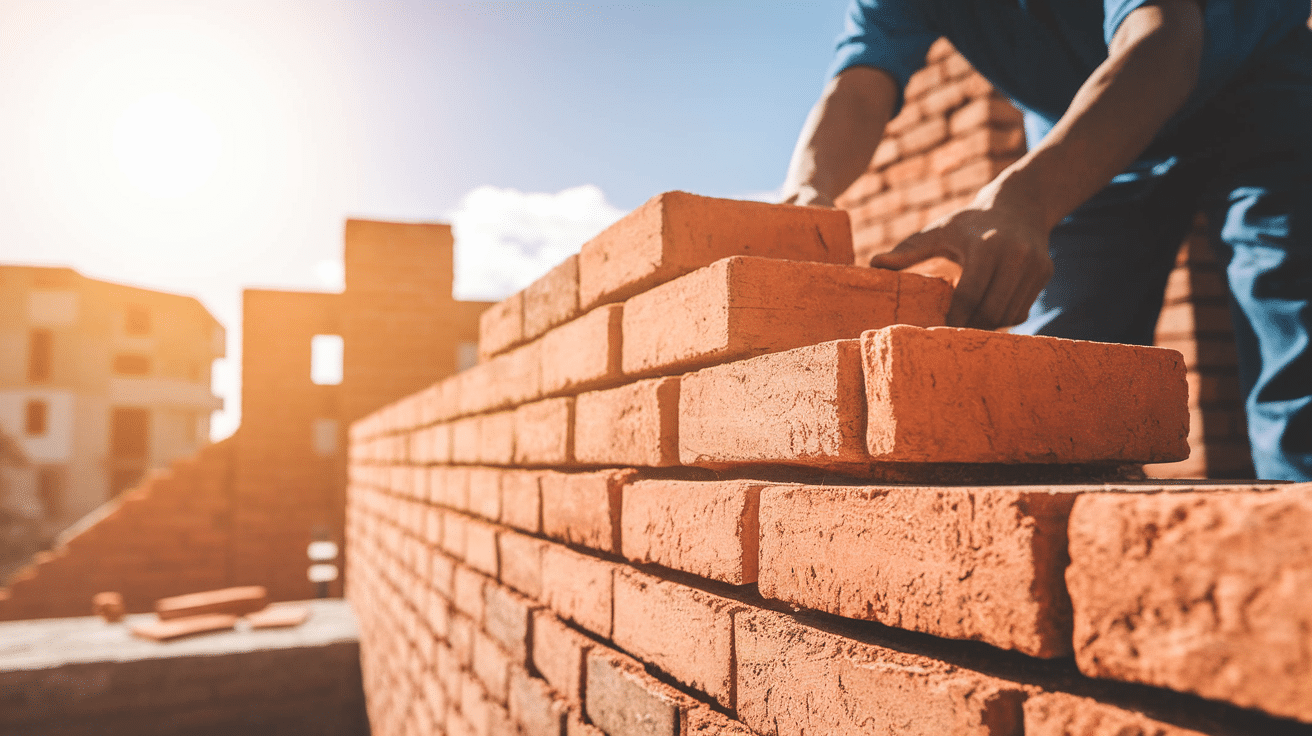
Have you ever looked at a brick wall and wondered what’s inside those strong blocks? I’ve asked myself this question many times.
Bricks may seem simple, but they’re actually made of carefully selected materials that give them their strength. Most bricks contain clay, sand, lime, and water mixed in specific amounts. The clay serves as the main ingredient, while sand adds stability.
When these materials are shaped and fired at high temperatures in a kiln, they change into the durable blocks we use to build our homes.
Understanding what bricks are made of can help you choose the right type for your next building project and know why some last longer than others.
History of Bricks
Bricks have been around for thousands of years. The first bricks were made about 10,000 years ago in the Middle East. These early bricks weren’t fired – they were shaped from mud and dried in the sun.
Ancient Egyptians made their bricks from Nile mud mixed with straw. The straw helped bind the mud together, making the bricks stronger. They dried these bricks in the sun too.
The Romans took brick-making to a new level. Around 3,000 years ago, they started firing clay bricks in kilns, which made the bricks much harder and more weather-resistant. Roman bricks spread across Europe as their empire grew.
What are Bricks Made of
Bricks are mostly made of clay, which comes from the earth. I like to think of clay as nature’s modeling material – it’s soft when wet but turns hard when dried or heated.
To make a basic brick, manufacturers mix clay with sand, lime, and water. The sand adds strength and helps prevent the bricks from cracking.
The lime works as a binding agent that holds everything together. Water makes the mixture workable, so it can be shaped.
Once the mixture is ready, it is pressed into molds to create the familiar rectangular shape. The bricks are then dried and then fired in special ovens called kilns.
Raw Materials Required to Make a Brick
| Material | Role | Key Features |
|---|---|---|
|
Clay |
Basic structure of the brick | Natural, hardens and becomes durable when heated, varies by region |
|
Sand |
Strength-builder | Prevents shrinkage during drying, adds internal strength |
|
Lime |
Natural glue | Binds materials together, improves water resistance, aids in setting |
|
Water |
Activator | Turns the mix into a workable paste, starts chemical reactions for hardening |
Step-by-Step Process of Making Bricks
Making bricks follows a step-by-step process that turns simple materials into strong building blocks. Here’s how the process goes:
Step 1: Mining and Preparation
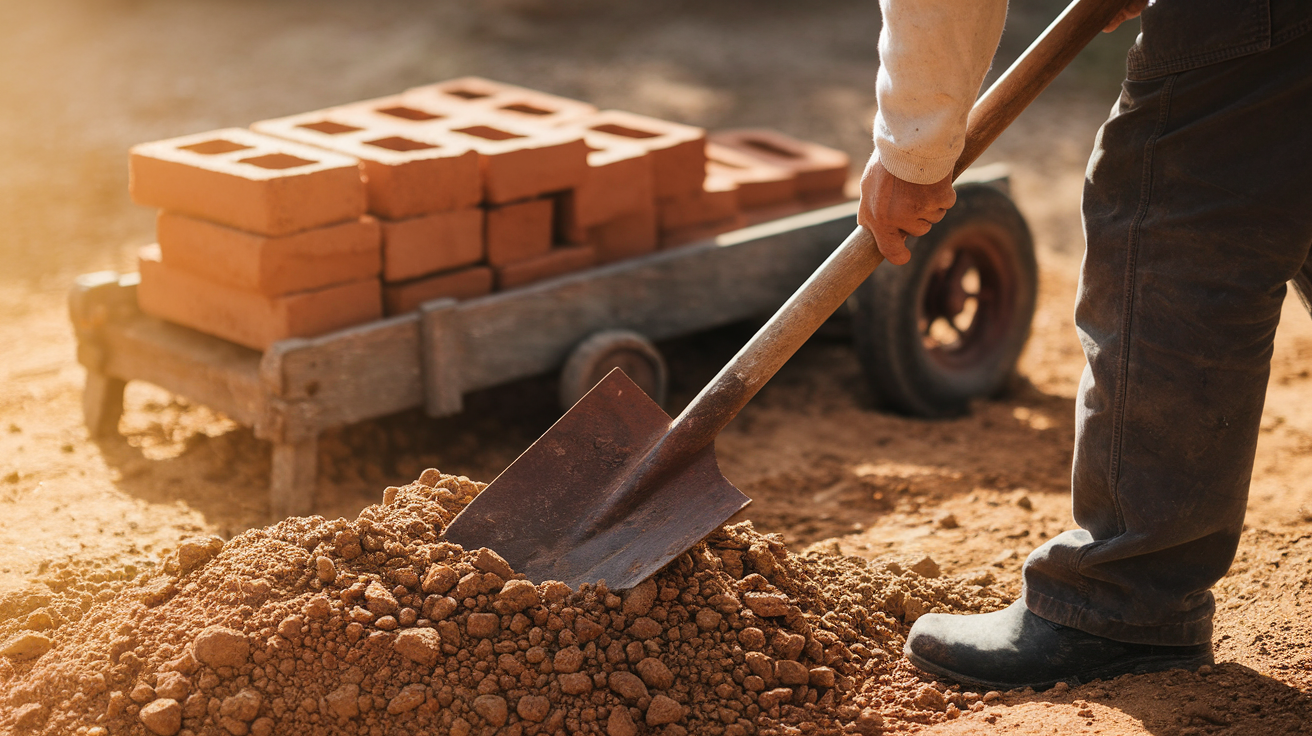
First, making bricks starts with digging up good-quality clay from the ground. Once we’ve got the clay, it’s cleaned and broken down into smaller bits to make sure it’s smooth and ready to use.
Think of this step as getting the clay nice and soft, just like you would knead dough before baking.
Step 2: Mixing the Ingredients
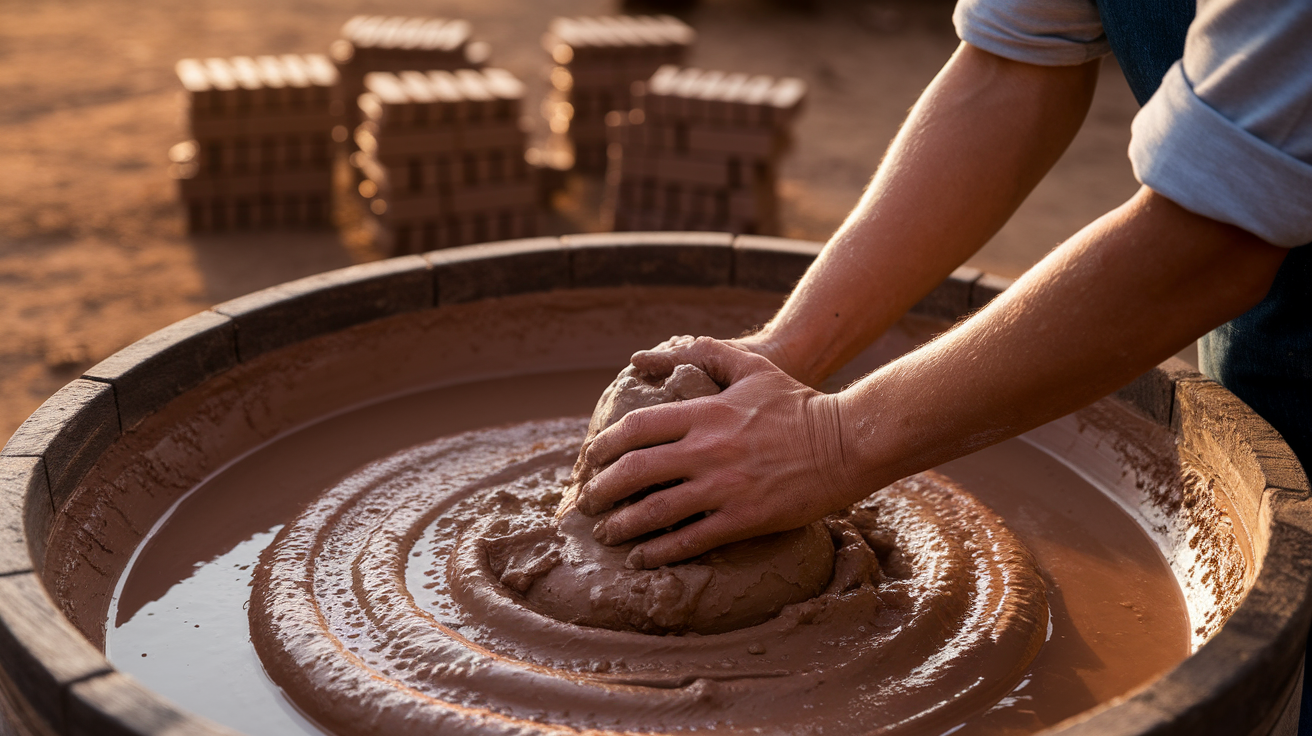
Next, we mix the prepared clay with water and sometimes a few extra materials like sand or lime. This mixture needs to be just the right consistency; too much water, and it’s sloppy; too little, and it’s too hard to work with.
The goal here is to create a perfect clay “batter” that’s easy to shape into bricks.
Step 3: Molding the Bricks
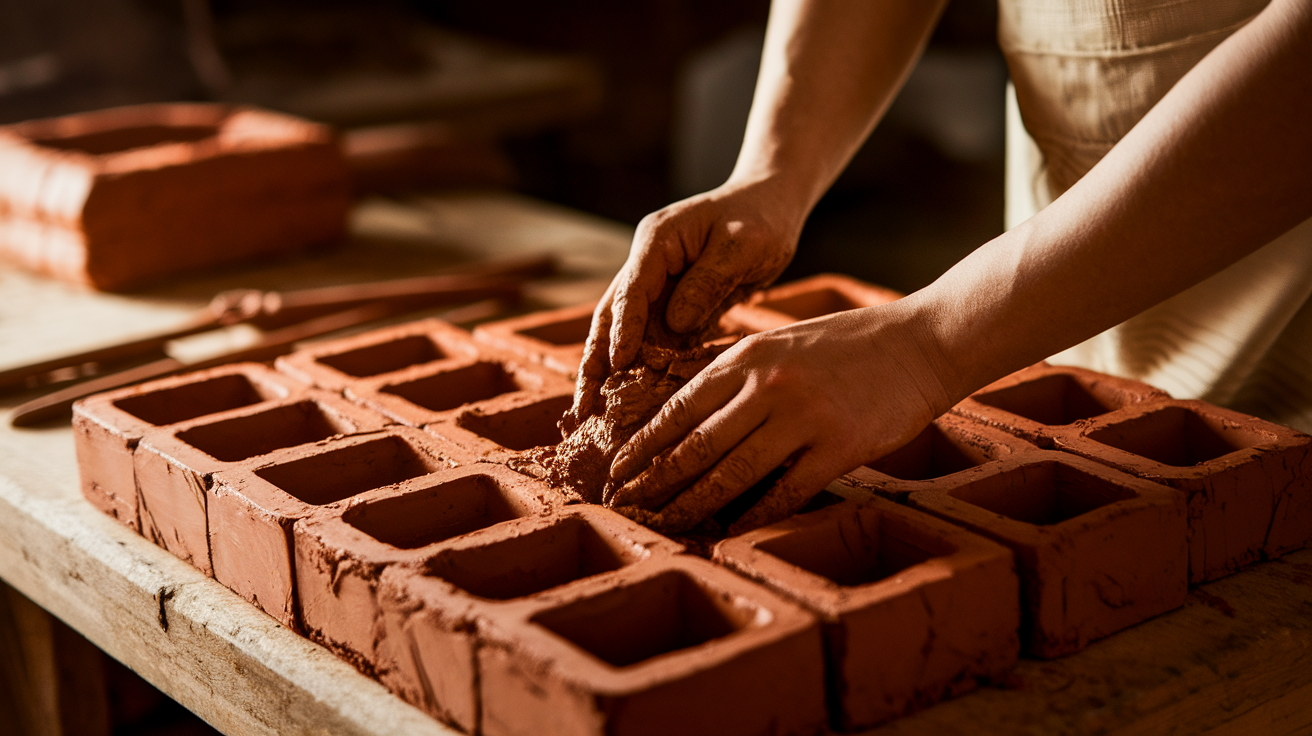
Now comes the fun part: shaping the bricks! The clay mixture is put into molds, which are like cookie cutters for bricks. Once the clay fills the mold, it takes on the familiar rectangular brick shape we all know.
This step is all about making sure every brick comes out uniform and neat.
Step 4: Drying
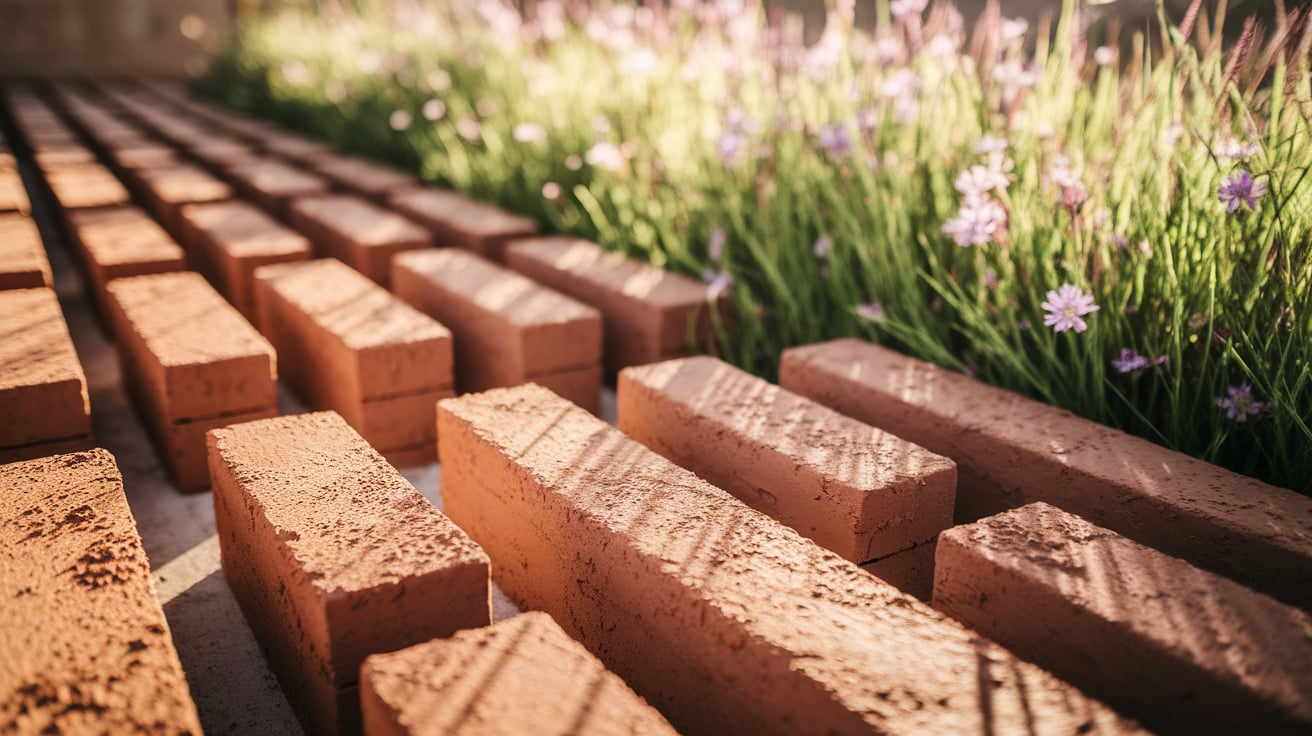
Before the bricks can be hardened, they need to dry out. The freshly molded bricks are laid out or stacked in a way that allows air to circulate around them.
This step allows the bricks to lose their excess moisture, preventing them from cracking or breaking later on.
Step 5: Firing the Bricks
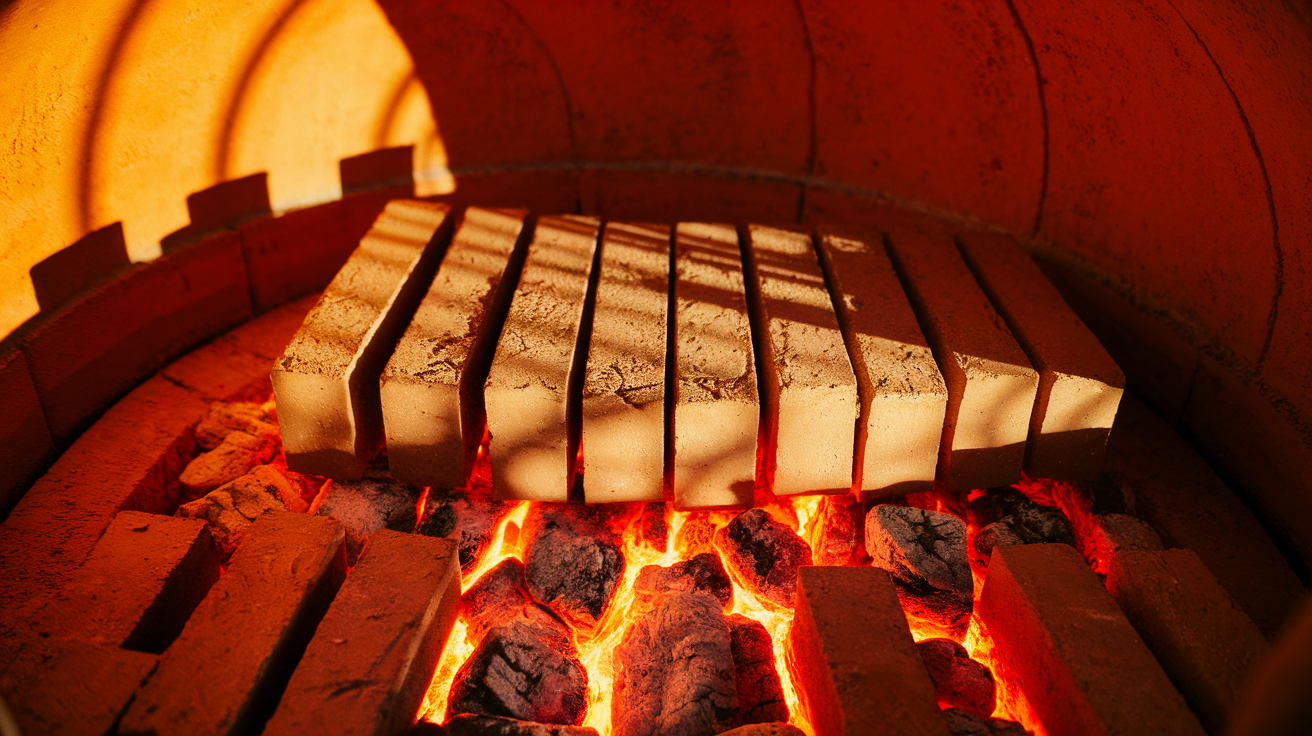
After drying, it’s time to make those bricks tough and durable. They’re placed in a kiln, a super-hot oven that heats them to really high temperatures.
The heat changes the soft clay into hard, strong bricks that can handle all kinds of weather and pressure.
Step 6: Cooling and Quality Control
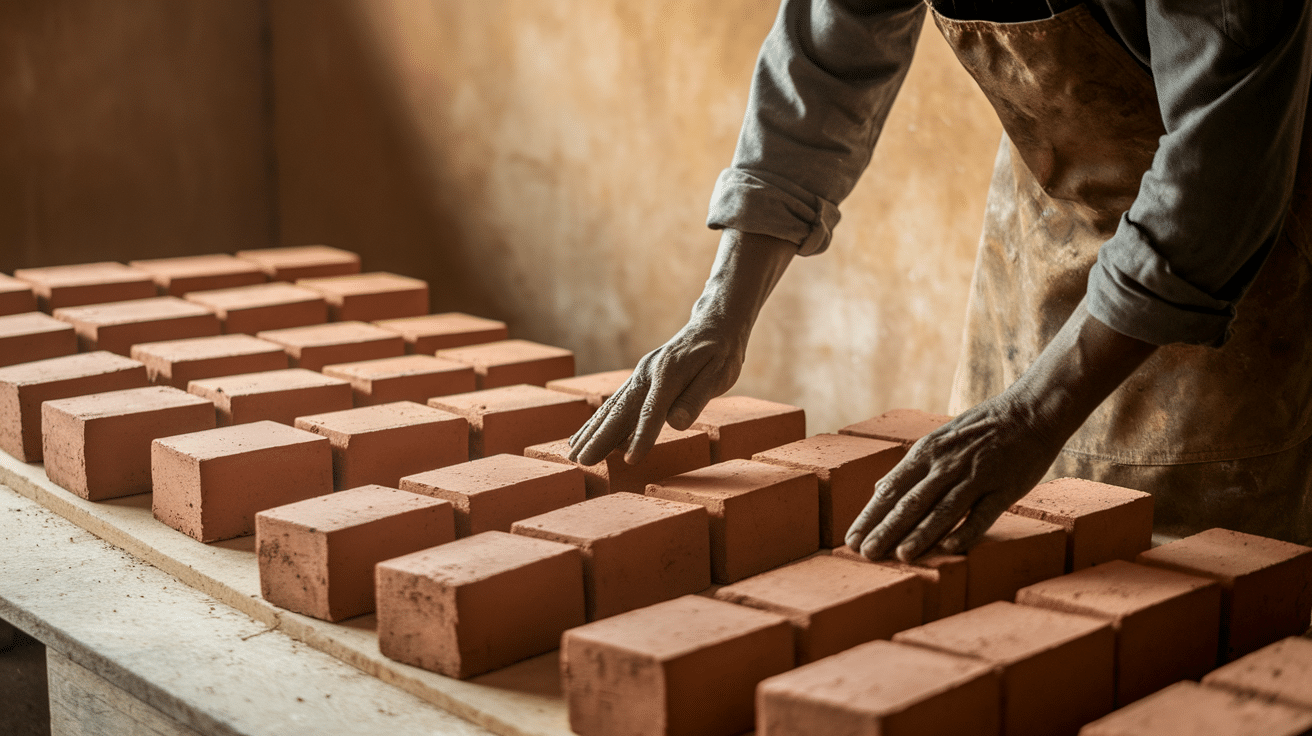
Once they’re done cooking, the bricks need to cool down before they’re ready to use. After they’ve cooled off, each brick is checked for quality.
If a brick is cracked or misshapen, it gets set aside. Only the best bricks make it through to the end.
Different Types of Bricks
| Type of Brick | Appearance | Use |
|---|---|---|
|
Common Clay Bricks |
Red or brown, uniform rectangular shape | General construction and walls |
| Face Bricks | Smooth or textured surface, uniform color | Exterior walls and facades for aesthetic appeal |
| Engineering Bricks | Dense, smooth, often blue or red | Load-bearing walls, foundations, and damp-proof courses |
|
Fire Bricks |
Pale yellow or cream, very dense | Fireplaces, kilns, and furnaces |
| Concrete Bricks | Gray can be painted or textured | Structural walls, landscaping, and retaining walls |
| Fly Ash Bricks | Uniform gray, smooth surface | Wall construction, particularly in eco-friendly or cost-effective projects |
| Sand Lime Bricks | White or light gray, smooth texture | External walls, pathways, and decorative applications |
Uses and Utilisation of Bricks
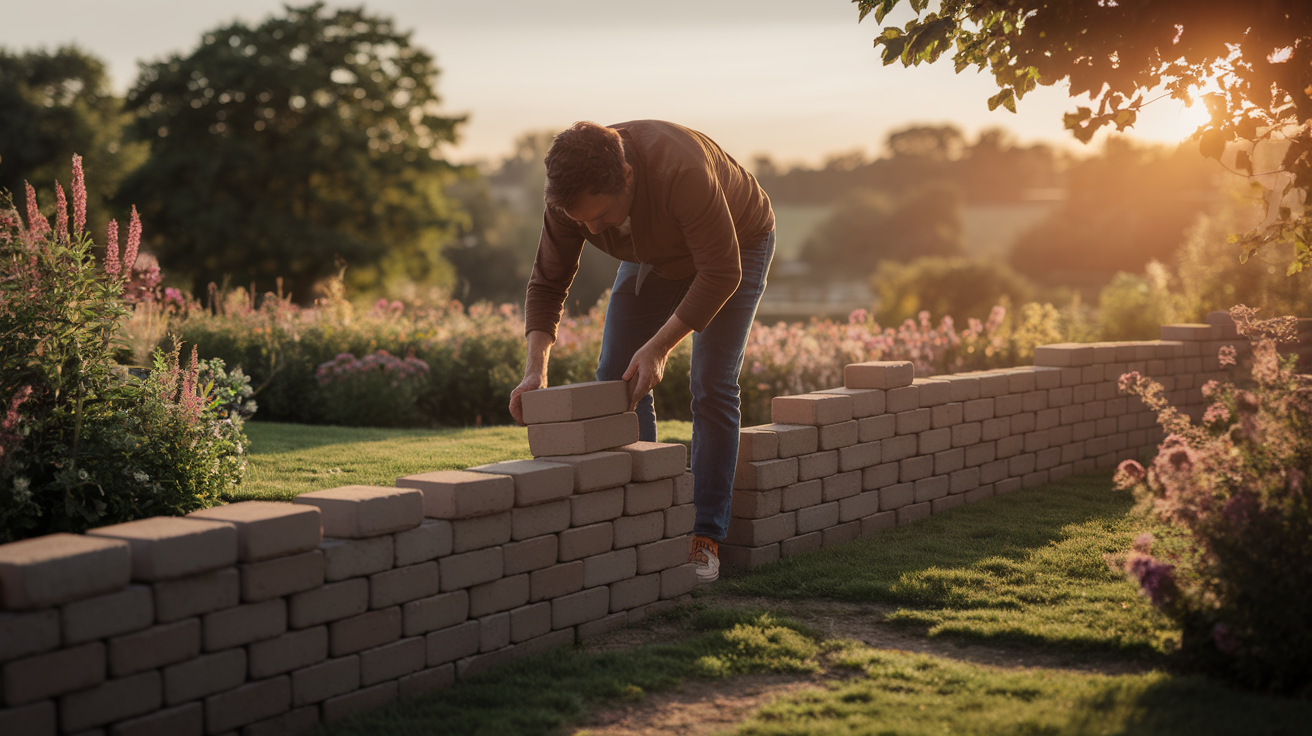
Bricks have stood the test of time as one of our most trusted building materials. Their simple makeup of clay, sand, lime, and water creates a product that serves countless purposes in both construction and design.
- Home Construction: Brick homes stay warmer in winter and cooler in summer.
- Outdoor Spaces: Patios, walkways, and driveways that resist weather damage.
- Garden Features: Raised beds, retaining walls, and decorative borders.
- Fire Safety: Fireplaces, pizza ovens, and chimneys that contain heat safely.
- Sound Barriers: Walls that reduce noise from roads or neighbors.
- Decorative Elements: Interior accent walls that add character to modern spaces.
- Commercial Buildings: Stores and offices that need minimal maintenance.
- Landscaping: Edging, steps, and outdoor features that blend with nature.
- Historic Restoration: Matching old structures with compatible materials.
- Diy Projects: Small-scale home improvements like mailbox stands or planters.
Final Thoughts
So now you know what goes into making those sturdy bricks all around us! It’s pretty interesting how these basic materials from the earth can become so strong after being fired in a kiln.
If you’re considering using bricks for your home or garden project, you now understand why they’re a good choice.
They look great, last forever, and don’t need much care. Plus, they’re better for the planet than many newer building materials.
Next time you touch a brick wall, you’ll know exactly what’s inside it and why it’s stood the test of time.

